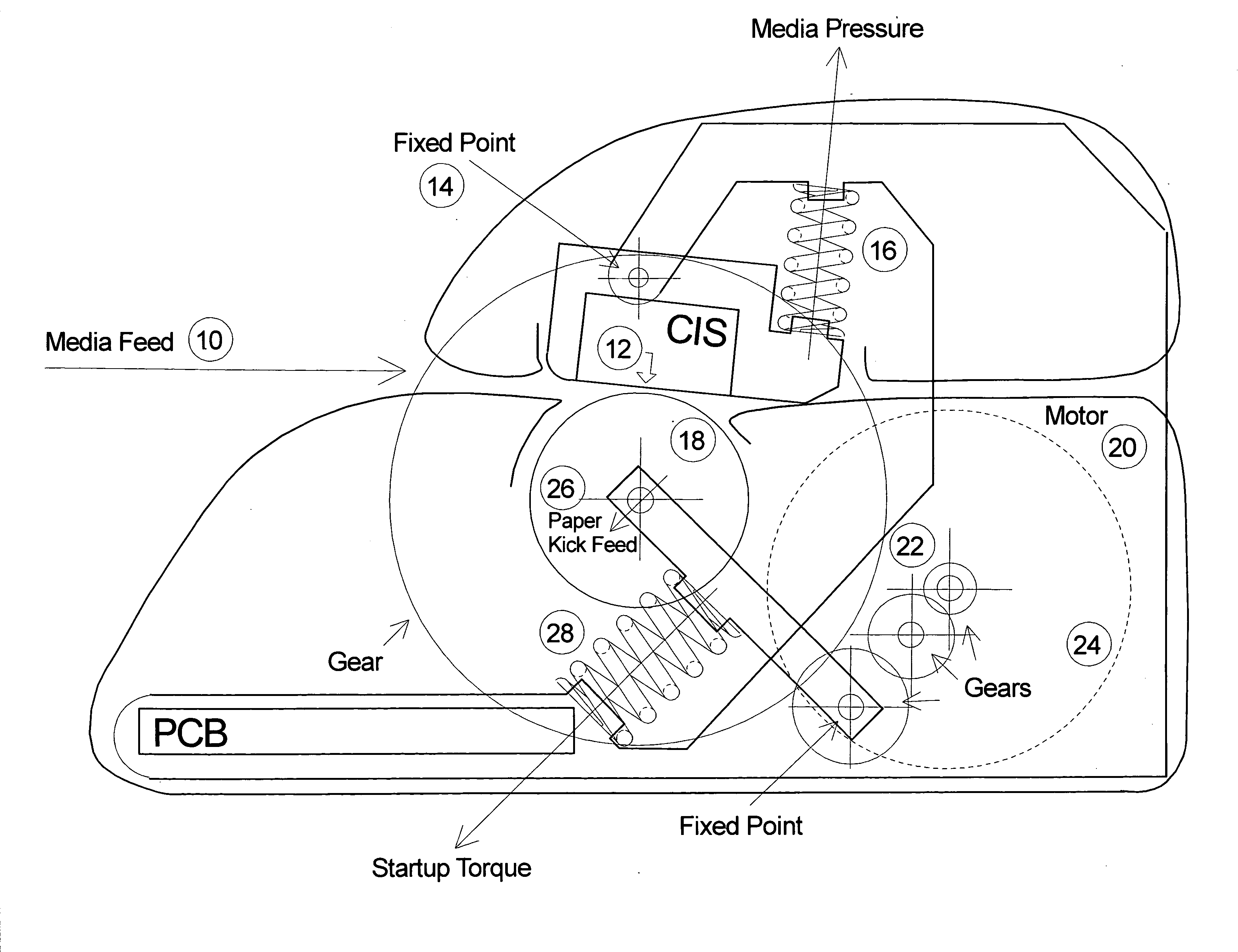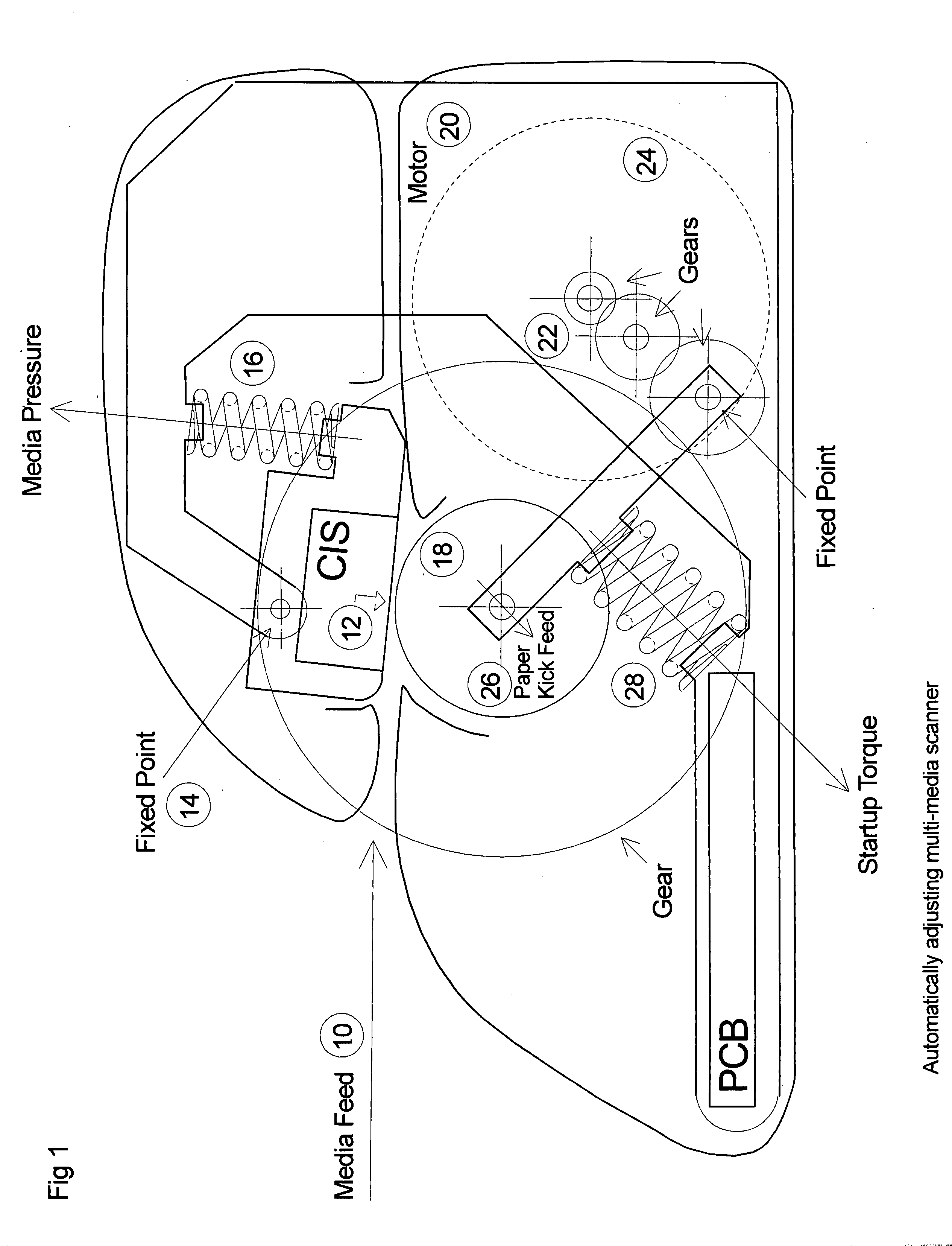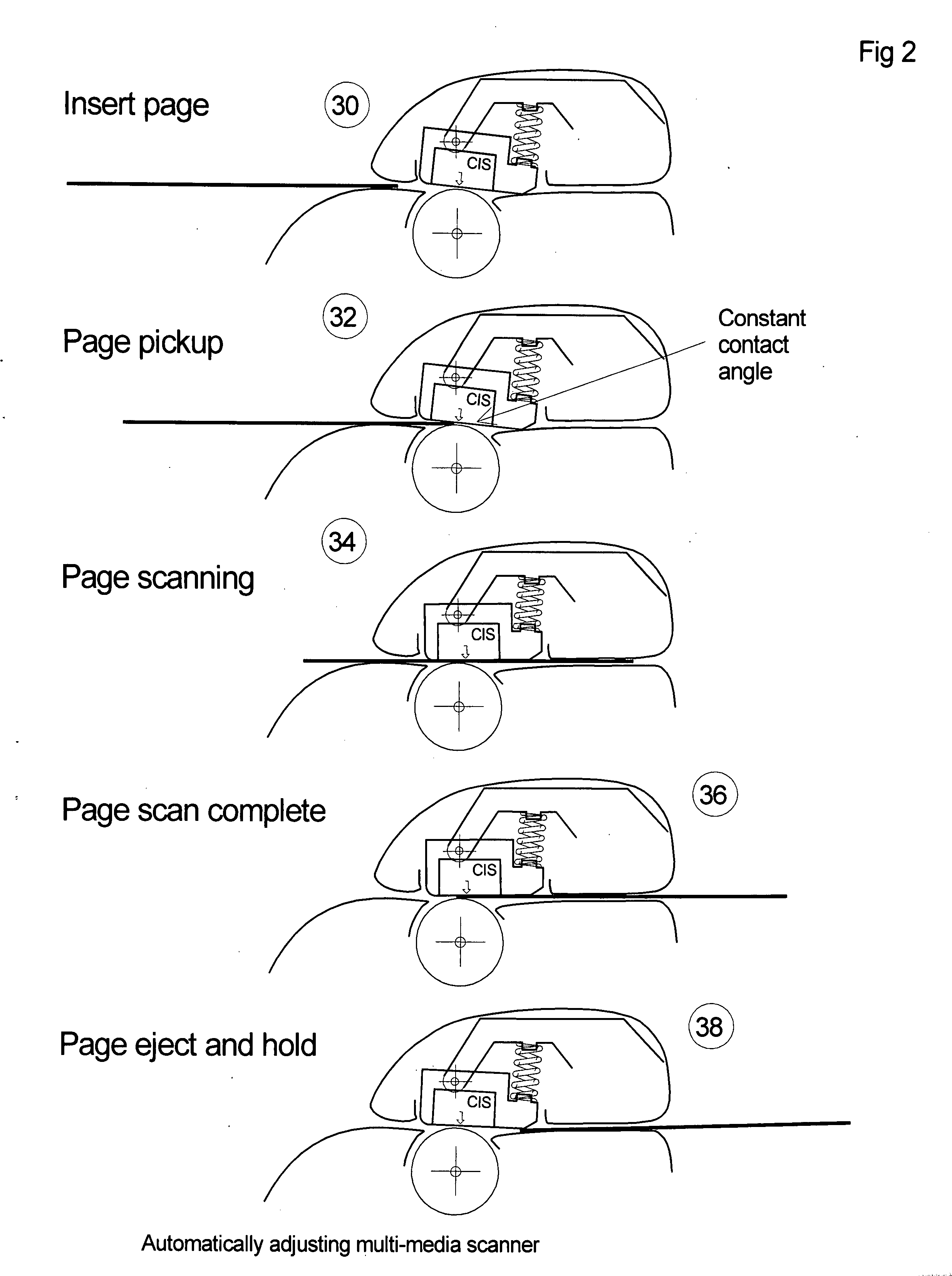Automatically adjusting multi-media scanner
- Summary
- Abstract
- Description
- Claims
- Application Information
AI Technical Summary
Benefits of technology
Problems solved by technology
Method used
Image
Examples
Embodiment Construction
[0014]The following detailed description illustrates the invention by way of example, not by way of limitation of the principles of the invention. This description will clearly enable one skilled in the art to make and use the invention, and describes various embodiments, adaptations, variations, alternatives, and uses of the invention. The description includes what are presently believed to be the best modes of carrying out the invention.
[0015]In this regard, the invention is illustrated in 2 relatively simple figures; although sufficiently complex as to illuminate to one skilled in the art of such scanner architecture, and calibration methods viable for making or using said invention.
[0016]FIG. 1 illustrates the inventive apparatus as a side transparent view. The media feed 10 leads into the CIS 12, which is affixed at a fixed point 14 connected to a spring loaded upper and lower attachment point. Upon media insertion by a user, the CIS 12 which begins at an angle, will rotate to ...
PUM
 Login to View More
Login to View More Abstract
Description
Claims
Application Information
 Login to View More
Login to View More - R&D
- Intellectual Property
- Life Sciences
- Materials
- Tech Scout
- Unparalleled Data Quality
- Higher Quality Content
- 60% Fewer Hallucinations
Browse by: Latest US Patents, China's latest patents, Technical Efficacy Thesaurus, Application Domain, Technology Topic, Popular Technical Reports.
© 2025 PatSnap. All rights reserved.Legal|Privacy policy|Modern Slavery Act Transparency Statement|Sitemap|About US| Contact US: help@patsnap.com



